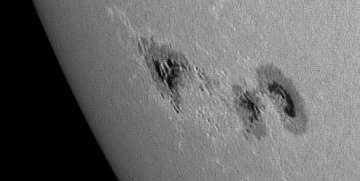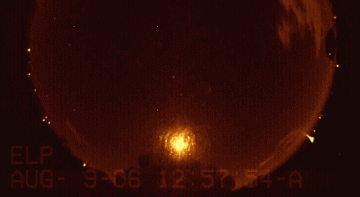 Did you miss the aurora surprise of August 7th? Next time get a wake-up call: Spaceweather PHONE.
Did you miss the aurora surprise of August 7th? Next time get a wake-up call: Spaceweather PHONE.
PERSEID UPDATE: Earth is plunging into the tail of Comet Swift-Tuttle, the source of the Perseid meteor shower, which peaks on Saturday morning, August 12th. The best time to look is during the dark hours before dawn. Problem: With the Moon out, there are no "dark hours" this year. Are the Perseids worth waking up for...? Skip over the giant sunspot for answers.
BIG SUNSPOT: The rapid growth of sunspot group 904 continues: movie. From end to end, it stretches almost 100,000 kilometers. This morning, Dennis Simmons of Brisbane, Australia, photographed the behemoth:

When sunspots grow very quickly, their magnetic fields can become unstable and explode. Sunspot 904 harbors energy for M-class eruptions and poses a gathering threat for X-flares. This sunspot bears watching.
BRIGHT PERSEIDS: With the Moon glaring in the background, this weekend's Perseid meteor shower is supposed to be a dud. But maybe it won't be so bad after all. All week long, observers have been seeing some bright, early Perseids, such as this one streaking over El Paso, Texas, on August 9th:

Astronomer Jim Gamble caught the fireball using one of the Sandia Meteor Detection Network's all-sky cameras. The spotlight at the bottom of the image is the full Moon. Versus the moonlight, the Perseid won. "I hope this is a sign of things to come," says Gamble.
PERSEID CALENDAR: (all times are local to the observer)

